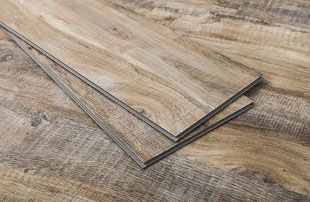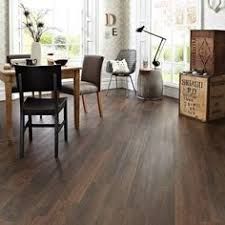You may have heard of vinyl plank flooring or luxury vinyl plank flooring lately. Vinyl floors have come a long way since the “linoleum” floors of the 50’s and 60’s. The original linoleum flooring was made of linseed oil and other natural ingredients, and is actually still made today. However it was replaced with sheet vinyl and the flooring of choice for kitchens and baths, but still generally referred to as “linoleum” by the public. This sheet vinyl flooring, still quite available, is durable and inexpensive, but lacks a little class. It’s generally softer and can be cut or dented easier by dropping things, and has a very repetitive manufactured pattern. It also tends to have a glossy finish and looks very much like, well… vinyl.

VINYL PLANK FLOORING: WHAT IT IS AND WHY IT IS SO POPULAR

Vinyl plank first showed up as a denser, tougher kind of vinyl flooring than sheet vinyl, but in the form of thin (2mm) gluedown planks. Gluedown vinyl tiles called VCT (Vinyl Composition Tile) had already been used for decades in commercial settings, and still are. Gluedown vinyl planks are generally meant for commercial environments, but can be put in residences as well. Thicker vinyl planks that are installed as a floating floor have been around for years now, but they have been greatly improved upon lately. That brings us to today’s vinyl planks.
Vinyl planks have a rigid core and a layer of vinyl on the surface. The planks are typically between 4-8mm in thickness, with wear layers varying from 2mil to 28mil. 20 mil is rated or commercial. However there have been plenty of issues with vinyl planks in the past, due to inferior locking systems, unstable cores and poorly made wear layers. The most notable issue was that vinyl plank floors expanded and contracted with changes in temperature – particularly direct sunlight, to a great degree. This meant that whole floors would expand and bubble up when sunlight came through a window. The reason for this was that even though the core was rigid, the wear layer of vinyl would expand under the heat and light of the sun, pulling the whole floor with it. These cores were (and many still are) made of PVC and other plastic composites, and are not stable enough.
The latest generation of vinyl plank flooring has gone to what is called SPC or a Stone Composite Core. The core literally has ground up stone elements within it, that resist expansion and contraction and hold the vinyl layer steady even under extreme conditions. Another version is WPC – Wood Composite Core. These planks are waterproof, extremely durable, and very realistic in appearance, feel and texture. They lock together like laminate flooring, installed over a thin pad. So a vinyl plank is like a laminate plank in many ways, except that it is 100% waterproof. As the core material is also denser and heavier, vinyl planks are also quieter under foot. Vinyl planks are so tough they are typically warranteed for commercial settings 10-20 years and for a lifetime for residences. They are also more expensive than laminate, as could be expected.
So vinyl planks are a great option for homes and businesses today. Although they do not add the same value to a home as a hardwood floor, the embossed grain wood-look surfaces are more realistic and beautiful than ever, and the durability is unmatched, especially for homes with pets or in wet areas. Ask us more about vinyl plank flooring. Call Desert Hardwood Flooring at (928) 925-3084.
